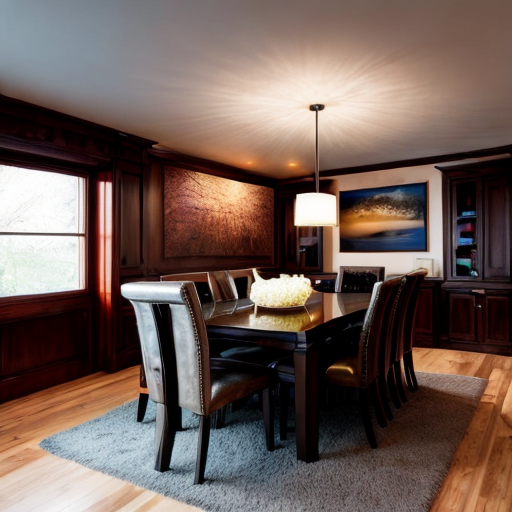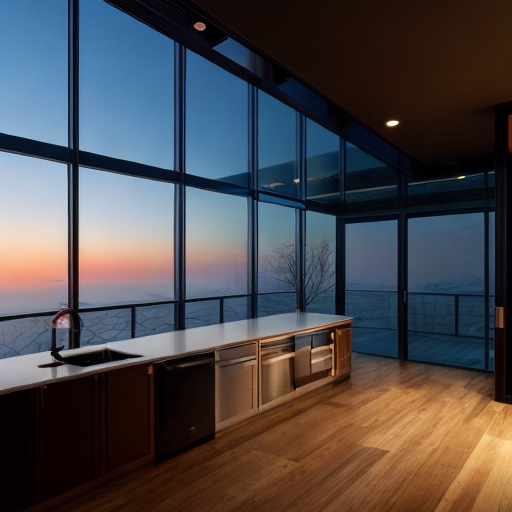Introduction to Home Automation: Understanding the Concept and Benefits
Welcome to the wonderful world of home automation! If you've ever dreamt of living like a tech-savvy superhero, this is your chance to make it a reality. Home automation is like having your own personal butler, except it's not a person, it's a bunch of smart devices that work together to make your life easier. Picture this: you walk into your house and the lights magically turn on, the temperature adjusts to your liking, and your favorite tunes start playing. How does it work, you ask? Well, it's a combination of cutting-edge technology, a sprinkle of wizardry, and a dash of pure genius. Essentially, you connect various devices in your home to a central hub, like a mastermind orchestrating everything behind the scenes. From controlling your lights and appliances to managing your security system, home automation is here to make your life a little more magical.
Exploring the Components of Home Automation Systems: A Closer Look at the Technology
Home automation is the integration of technology and devices within a household to control and automate various functions, making life more convenient, efficient, and secure. It involves connecting and controlling appliances, lighting, heating/cooling systems, security cameras, and other devices through a central hub or smartphone app. One fascinating aspect of home automation is its underlying technology, known as the Internet of Things (IoT). IoT enables devices to communicate and share data with each other over the internet, creating a network of interconnected smart devices. These devices are equipped with sensors, processors, and connectivity features that allow them to receive and execute commands remotely. To make home automation work, homeowners typically set up a central hub or a smart speaker like Amazon Echo or Google Home, which acts as a control center. This hub connects to various smart devices through Wi-Fi, Bluetooth, or other wireless protocols. Users can then control and monitor these devices through a smartphone app or voice commands. For example, with home automation, you can remotely adjust the thermostat to your desired temperature before arriving home, turn on/off lights or appliances, lock/unlock doors, monitor security cameras, and even receive alerts or notifications for any unusual activities. Overall, home automation simplifies daily tasks, enhances energy efficiency, improves security, and provides greater convenience by allowing homeowners to control and manage their homes with ease, all thanks to the power of IoT technology.
Welcome to the fascinating world of home automation systems, where technology meets convenience in the most delightful way. Imagine having a control center that allows you to effortlessly manage all the smart devices in your home. From thermostats and lighting to security cameras and even your coffee maker, these components work together harmoniously to create a seamless experience. It's like having a team of tiny tech-savvy minions at your beck and call, ready to cater to your every whim. These systems rely on a combination of wireless communication, sensors, and good old-fashioned programming to bring your home to life. So, sit back, relax, and let the magic of home automation transform your humble abode into a futuristic haven.
The Inner Workings of Home Automation: Understanding the Communication Protocols and Integration

Home automation is like having a symphony of smart devices in your home, all working together in perfect harmony. But how do these devices communicate with each other? That's where communication protocols come into play. These protocols act as the language that allows different devices to understand and interact with each other. Some popular protocols include Wi-Fi, Zigbee, Z-Wave, and Bluetooth. Each protocol has its own strengths and weaknesses, but they all serve the same purpose - to ensure that your devices can talk to each other and follow your commands.
Integration is another crucial aspect of home automation. It's like having a master conductor who brings all the instruments together to create a beautiful melody. In the world of home automation, integration refers to the process of connecting different devices and systems so that they can work in unison. This can be achieved through a central hub or a smart home controller. These devices act as the brain of your home automation system, allowing you to control and monitor everything from a single interface. Whether it's adjusting the temperature, turning on the lights, or even setting up complex routines, integration is the key to unlocking the full potential of your smart home.
The inner workings of home automation rely heavily on programming and automation rules. Think of it as giving your home a set of instructions to follow. With the help of user-friendly apps or software, you can create custom routines and schedules for your devices. For example, you can program your lights to turn on automatically when you enter a room, or have your coffee maker start brewing as soon as your alarm goes off. These automation rules allow you to personalize your home automation system to fit your lifestyle and preferences, making your daily routines more efficient and enjoyable.
In conclusion, home automation is a fascinating world where communication protocols, integration, and automation rules come together to create a seamless and convenient experience. By understanding the inner workings of this technology, you can transform your home into a smart haven that caters to your every need. So, embrace the magic of home automation and let your imagination run wild as you explore the endless possibilities that await you.
Getting Started with Home Automation: Step-by-Step Guide to Implementing Automation in Your Home
Fun fact: Did you know that home automation can make your house feel like a futuristic smart home straight out of a sci-fi movie? Home automation refers to the use of technology to control and automate various household tasks and functions. It involves integrating different devices, appliances, and systems within your home to create a centralized control system. This allows you to manage and monitor various aspects of your home, such as lighting, heating, security, entertainment, and more, all from a single interface. The core of home automation lies in the use of smart devices and sensors that communicate with each other and with you through a network, typically using Wi-Fi or Bluetooth. These devices can be controlled remotely through smartphones, tablets, or voice assistants, making it incredibly convenient to manage your home even when you're away. For example, you can set up schedules for your lights to turn on and off automatically, adjust your thermostat remotely to ensure the perfect temperature when you arrive home, or even receive alerts and video feeds from security cameras to keep an eye on your property. The possibilities are endless, and with the rapid advancements in technology, home automation is becoming increasingly accessible and affordable for homeowners worldwide.
Ready to embark on your home automation journey? Here's a step-by-step guide to help you get started. First, assess your needs and prioritize which areas of your home you want to automate. Whether it's lighting, security, or entertainment, identify the devices and systems you want to integrate. Next, research and choose the communication protocols that best suit your needs. Wi-Fi is a popular choice for its widespread compatibility, but Zigbee and Z-Wave offer advantages in terms of range and energy efficiency. Once you have your devices and protocols in place, it's time to set up a central hub or smart home controller. This will be the command center that allows you to control and monitor your devices from a single interface. Finally, dive into the world of automation rules and programming. Create custom routines and schedules to make your home work for you. With a little patience and creativity, you'll soon be enjoying the convenience and magic of home automation in no time.

